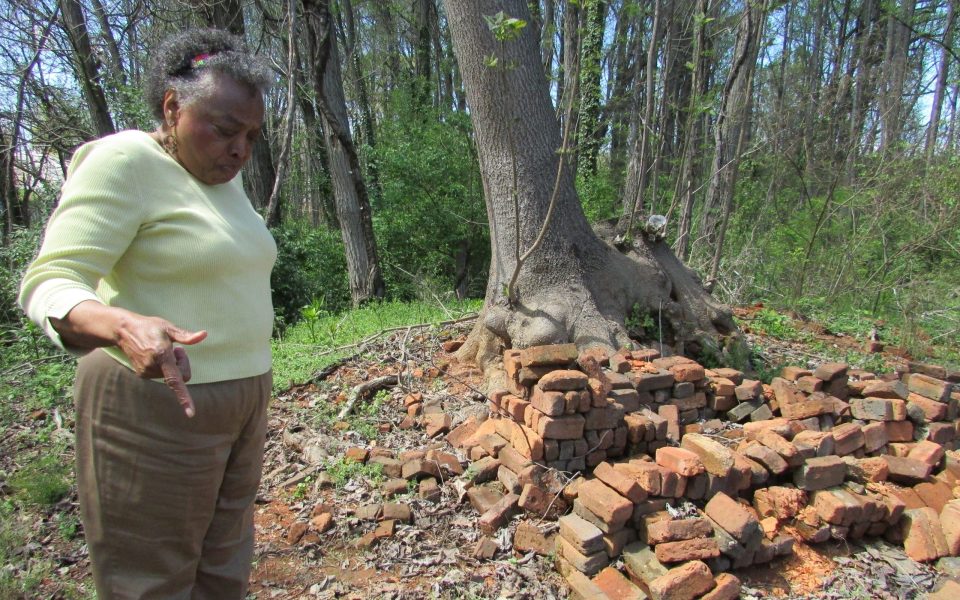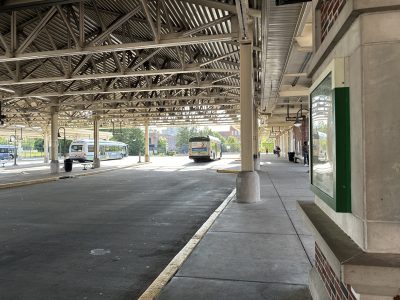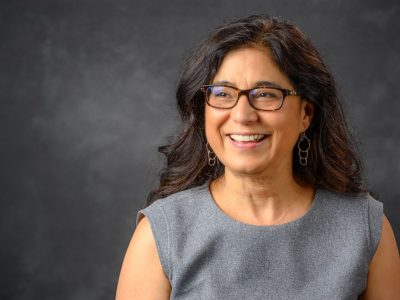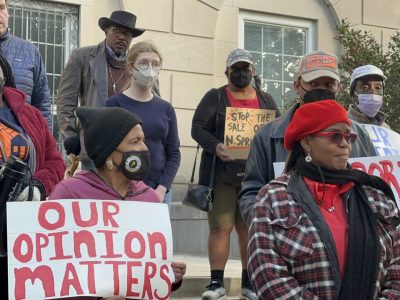by Jordan Green
State lawmaker Evelyn Terry is engaging preservation experts to push forward a plan to restore the house and brickyard where her distinguished grandfather operated a successful brickmaking business in Winston-Salem’s Dreamland Park neighborhood.
Evelyn Terry’s goal of restoring her grandfather’s house and brickyard on Dellabrook Road on the east side of Winston-Salem has been a long time coming.
Since taking on the project in 2000, she’s worked with the city’s code inspection office to keep the one-story clapboard house from being condemned. The grass gets mowed regularly, and a worn brick sidewalk leads out to the street. The property has been listed on the National Historic Register of Historic Places since 2000, and in 2007 a historic marker was erected in front of the houses.
And while the project is still a long way from completion, it’s getting a much-needed boost thanks to a planning grant from the Marion Stedman Covington Foundation to fund a charrette scheduled for Saturday with a panel of experts, to be moderated by Preservation North Carolina President Myrick Howard.
George Black, the son of former slaves, walked to Winston-Salem with his father and older brother from rural in Randolph County in 1889. He worked various odd jobs and learned how to make bricks. Through hard work and remarkable business savvy, he eventually established a successful business as a brickmaker. Black’s hand-made bricks were used in restorations in Old Salem, Colonial Williamsburg, Wachovia bank branches and fine homes in Buena Vista. Prior to his death at the age of 101 in 1980, Black was sent by President Nixon to the South American country of Guyana to teach brickmaking.
Terry, who is a state lawmaker, envisions the house and brickyard as a cultural center that anchors an economic renaissance in Dreamland Park, a struggling African-American neighborhood that was largely rural when her grandfather, affectionately known as “Papa,” moved there during the Great Depression.
“The reality is that it must be a gathering place that does enhance our culture and values, and enables people to learn what we did here, and to go forth with whatever inspiration, desire and talents they have to realize their own goals,” Terry said.
“Papa hired children in the summertime,” she continued. “It was a way for me and my cousins to earn money so we could have school clothes. If a mule broke loose, there was a boy in the neighborhood — he probably worked for my grandfather, too — he would say, ‘Oh, Mr. Black’s mule done got loose again.’ And he’d go down in the ravine and get that mule. It was a community.”
Terry estimates that her grandfather employed hundreds of people at his brickyard on a seasonal basis. As her grandfather explained to legendary broadcaster Charles Kuralt, brickmaking is a springtime activity that happens when the clay is warm enough to extract from the ground. When Kuralt visited in November, Black reportedly told him: “Oh no, it’s hog-killing time. You got to come back.”
The many people who worked for Black over the years, Terry said, include Nathaniel Jones, the late grandfather of professional basketball player Chris Paul — Paul’s aunt holds a family reunion at their place in Dreamland Park — and Thomas Baldwin, who retired from BB&T and now lives in Kernersville.
Terry believes that her grandfather’s entrepreneurship at the height of Jim Crow segregation holds some lessons for African Americans today who are trying to build wealth in a society plagued with new structural barriers.
“We’ve got innovation today with the [Wake Forest] Innovation Quarter,” she said. “Innovation then was taking whatever it was that was being thrown away, and making use of it.”
When the white-owned brickyard where he was employed went out of business during the Great Depression, Black didn’t stay idle. He cut ice off the pond to sell for refrigeration, grew a big garden and made bricks — even though the market had evaporated. And he held onto a wooden mill given to him by his former employers that screened the clay for brickmaking.
“He took that mud mill that man gave him to break up for firewood, and he made bricks,” Terry said. “Bricks weren’t selling. He said, ‘You’ve got to keep working. Can’t sit on the porch. Got to keep moving.’ Come the next spring or so, someone wanted bricks. He had them.”
One of Black’s protégés, Thomas Brabham, worked with Terry to excavate the brick kiln behind the house.
When he was 9 years old, Brabham’s grandfather brought him to Black and asked him to teach the young boy how to work, Terry said. In 2011, Brabham was working sporadically in construction, when Terry persuaded him to help uncover the old bricks.
“Every day that the Lord sent him and I could drive him, we worked together,” Terry recalled. “I hauled away 10 loads of rubbish. We picked through the dirt and discovered hundreds of bricks. So that must have been the last batch of bricks that Mr. George Black made.”
When Brabham got sick, Terry had to put aside work on restoring the brickyard so she could help care for him. He died in 2013.
George Black’s legacy and Terry’s goal of revitalizing Dreamland Park attracted the interest of Theaster Gates, an African-American potter and professor a the University of Chicago, who has used the arts as a catalyst to renovate derelict buildings in the Greater Grand Crossing neighborhood on his city’s south side. Gates visited Winston-Salem in mid-March.
When Gates learned that some of Black’s bricks were in the fireplace at the Winston-Salem Marriott, “He just tried to embrace them,” Terry said.
“He is a man with many talents,” she said. “He is definitely an artist. His culture and values and education and learning are all infused in his vision. He took us through a visioning process. He told us: ‘You have to embrace your vision and share it with the world. And you’ve got to work at it.’”
A panel of experts, including architect Wesley Curtis, developer Dewey Anderson and Winston-Salem Neighborhood Development Director Ritchie Brooks will tour the house on Saturday morning to assess opportunities and challenges. During a working lunch at St. Paul United Methodist Church, the panelists will field suggestions from community representatives, and at 3:30 p.m. they will present recommendations to the public.
“The purpose of the charrette is to determine the best use and purpose for this site and the community in which it rests,” Terry said. “We want to lay the foundation for rebuilding this community with a focus on the legacy and values of this place.”
Join the First Amendment Society, a membership that goes directly to funding TCB‘s newsroom.
We believe that reporting can save the world.
The TCB First Amendment Society recognizes the vital role of a free, unfettered press with a bundling of local experiences designed to build community, and unique engagements with our newsroom that will help you understand, and shape, local journalism’s critical role in uplifting the people in our cities.
All revenue goes directly into the newsroom as reporters’ salaries and freelance commissions.





Leave a Reply